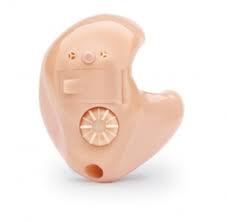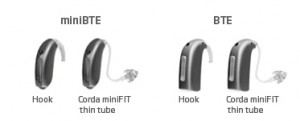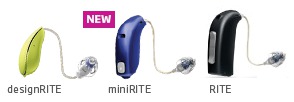Understanding the ear
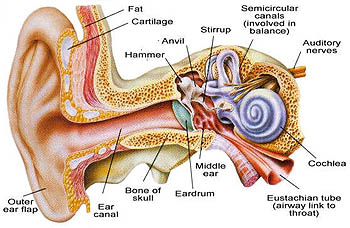 The ear is typically described as being comprised of three parts; the outer, middle and inner ear. However, the central auditory pathways from the auditory nerve to the brain comprise a fourth part of the ear and hearing. Although, each part of the ear plays an important role in the process of delivering sounds to the brain, it is only the mechanism to transmit the sound. It is in the brain where the sounds are actually heard and given meaning.
The ear is typically described as being comprised of three parts; the outer, middle and inner ear. However, the central auditory pathways from the auditory nerve to the brain comprise a fourth part of the ear and hearing. Although, each part of the ear plays an important role in the process of delivering sounds to the brain, it is only the mechanism to transmit the sound. It is in the brain where the sounds are actually heard and given meaning.
Outer Ear
When most of us talk about the ear, we are actually talking about the outer ear. It consists of the pinna (the structure on the side of our head), the ear canal and the tympanic membrane (eardrum). The pinna and ear canal’s function is to collect, localize and enhance sounds. The ear canal also serves to protect the eardrum from foreign bodies accomplishing this by its torturous nature and by cerumen (earwax) secreting glands.
Middle Ear
The middle ear is an air-filled space located behind the eardrum. Attached to the eardrum is the first of three small bones (ossicles) commonly referred to as the hammer, anvil and stirrup named for their distinctive shapes. When the sound waves collected by the pinna and enhanced as they travel down the ear canal strike the eardrum, the ossicles are set into motion. The acoustic energy from the sound wave has now been converted to mechanical energy.
Inner Ear
The inner ear is a fluid filled space comprised of the cochlea, semi-circular canals and other structures. The cochlea houses the sensory organ of hearing. The semi-circular canals and other structures house the sensory organ for balance. The stirrup bone pivots in the interior wall of the middle ear causing movement of the fluid inside the cochlea. The cochlea is shaped like a snail curled around on itself. Inside the snail shaped bone are three tiny canals with very complex microscopic structures. The Organ of Corti located in the interior canal houses the hair cells responsible for stimulating the auditory nerve. The movement of the fluid within the cochlea shears the hair cells creating the neural energy necessary for sending the auditory signal through the auditory nerve up the central auditory pathways to the brain for interpretation.
Types of Hearing Loss
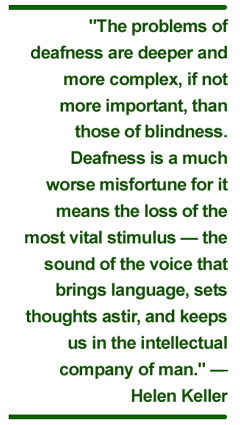 There are basically 3 types of hearing loss; conductive, sensorineural and mixed.
There are basically 3 types of hearing loss; conductive, sensorineural and mixed.
A conductive hearing loss typically indicates there is a problem in the outer or middle ear. It can be as simple as cerumen (wax) creating a blockage of the ear canal or a more complicated process such as bone growth around the middle ear bones causing a restriction of the movement of the bones and a reduction in the transmission of sound. Regardless of the cause, a conductive hearing loss in many cases is medically treatable. It is very important when obtaining a hearing test and a possible recommendation of hearing aids, to rule out any kind of treatable condition. Because a conductive hearing loss is typically medically treatable, hearing aids are generally not recommended for this type of hearing loss.
The second type of hearing loss is sensorineural or nerve hearing loss. In a sensorineural hearing loss, the damage is typically in the inner ear or auditory nerve and is generally non-reversible. Someone with a sensorineural hearing loss is typically an excellent candidate for hearing aids.
The third type of hearing loss is a combination of both sensorineural and conductive, meaning there is some degree of conductive and some degree of sensorineural loss present. This type of loss is aptly named mixed hearing loss. When medical treatment has been ruled out for the conductive component of the hearing loss, amplification is typically recommended for someone with a mixed hearing loss.
There are several other types of hearing loss which involve the central auditory pathways. However, these three are the most common and easily managed with hearing aids when medical management has been exhausted.
Types of hearing aids
There are many different styles of hearing aids each having advantages and disadvantages. The most appropriate style of hearing aid depends on many variables including but not limited to the amount of hearing loss, manual dexterity, visual acuity and patient preferences. With the many options in price and style everyone who needs hearing aids, should be able to have them.
IIC (invisible-in-the-canal)
CIC (Completely-in-the-canal)
ITC (In-the-canal)
ITE (In-the-ear)
BTE (Behind-the-ear)
RIC or RITE (Receiver-in-canal or receiver-in-the-ear)
Resources
Guide to College Planning for Hearing-Impaired Students


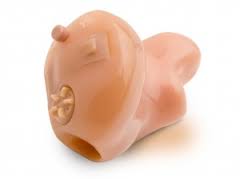
![cic-hearing-aids[1]](https://kytinnitustreatment.com/wp-content/uploads/2015/05/cic-hearing-aids1-300x215.jpg)

